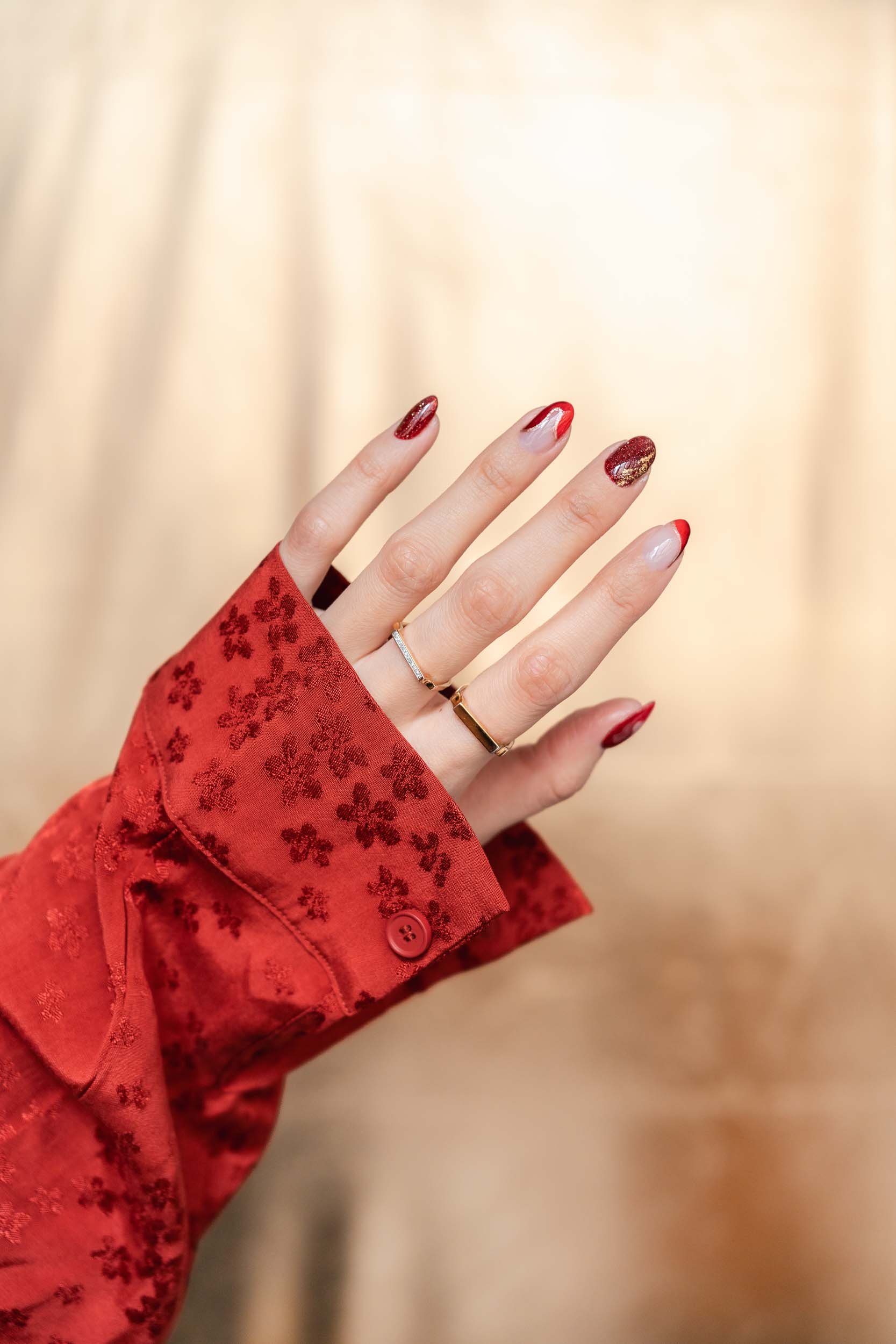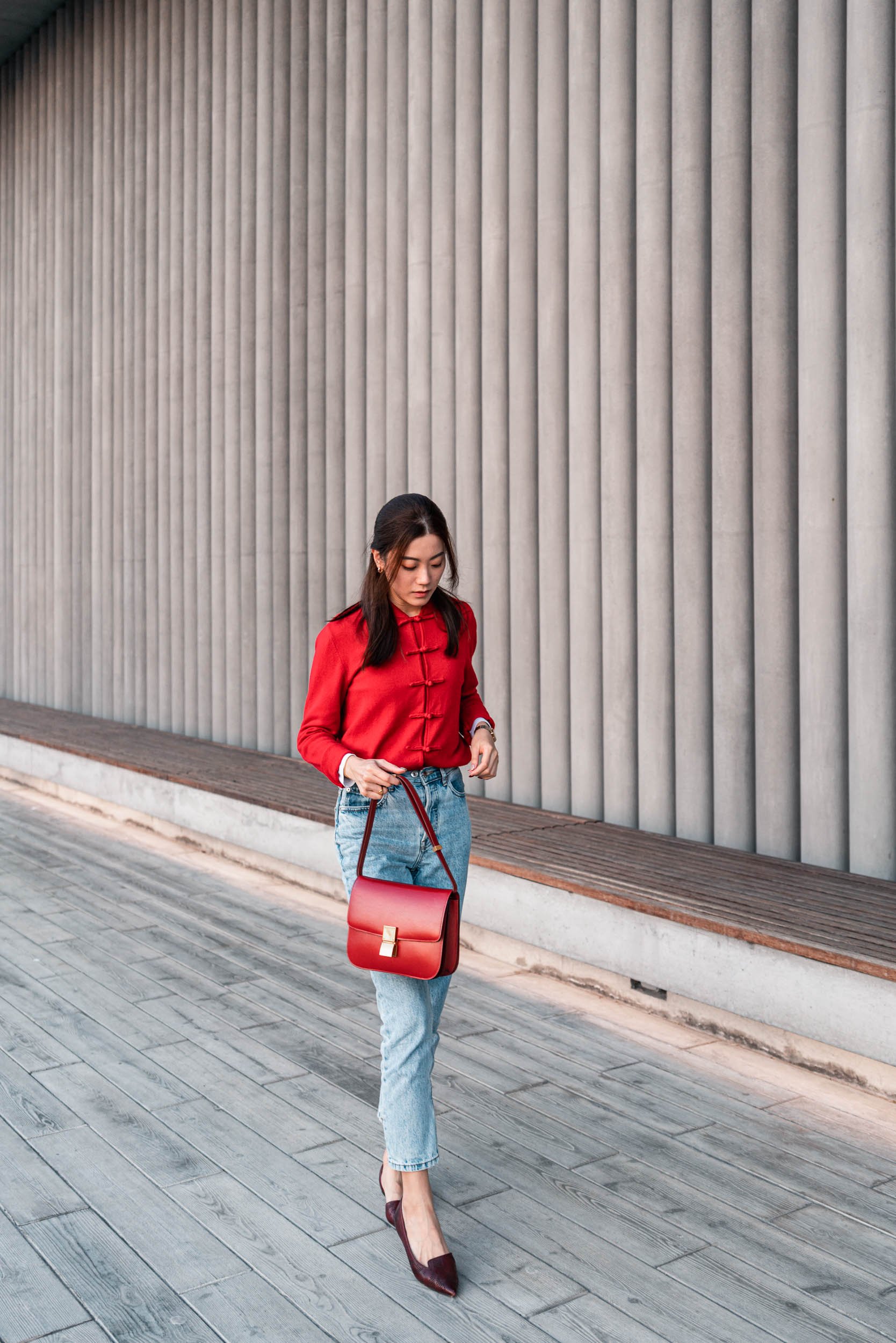Celebrating Chinese New Year: The Ultimate Guide to Dressing Right
From top to bottom, left to right: images courtesy of Shopbop, COS, Monica Vinader, and CHARLES & KEITH.
As the vibrant festivities of Chinese New Year approaches, the excitement in the air is palpable.
It’s not just a time for family reunions and delicious feasts; it’s also an opportunity to embrace tradition through the art of dressing. If Christmas is a season of dressed-up glamour, Chinese New Year is the equivalent of going out, even in everyday clothes. Traditionally, new clothes signify new beginnings, and ridding oneself of the old and sporting bright colours is almost customary; most won’t even bat an eyelid at you. Dress to impress, they say.
But navigating the intricate tapestry of customs surrounding attire can be daunting. From colours that invite good fortune to styles that embody respect and joy, what you wear can set the tone for the year ahead, ensuring you honour tradition while looking fabulous. Whether attending a lively celebration or hosting your own, understanding cultural nuances will elevate your festive spirit and style.
Do’s
Red
The Chinese love red; it’s no secret. Red is the most auspicious colour in Chinese culture, symbolising luck, happiness, and prosperity. At this time of the year, window displays will be all decked out in red, and wearing red is highly encouraged. There’s genuinely no better time to sport a fresh rouge.
Burgundy
By extension, burgundy can be perceived as a sophisticated alternative to the traditional red while maintaining auspicious connotations and a festive spirit. If you’re worried about standing out too much at the office or looking to extend the cost-per-wear of your pieces, burgundy is a versatile way to go.
Purple
Another classic for the Chinese New Year is purple (大紅大紫), often considered a lucky colour associated with nobility and wealth.
Traditionally, the Chinese favour highly saturated shades like magenta and violet (there’s a running joke that middle-aged aunties love wearing down jackets of these colours), though it’s much more common to see trendy shades of lilac and lavender on the streets nowadays.
Pink
While not as traditional as red, pink is still viewed favourably, especially when combined with other lucky colours. It often carries a more youthful vibe with connotations of love and happiness, allowing wearers to celebrate joy and positivity while adding a fresh touch to outfits.
Gold
The tradition of wearing gold is deeply embedded in Chinese customs. It is common for families to gift gold jewellery and ornaments during celebratory events, symbolising the passing down of prosperity from one generation to the next. With its associations with wealth and abundance, gold is the lucky colour most often used alongside red during the Chinese New Year celebrations. Aside from adding a festive and celebratory touch to outfits, the colour is believed to attract prosperity and good fortune for the coming year.
Silver
Similar to gold, silver (or any glitz, really) is often associated with wealth and prosperity (金銀滿屋). Some prefer silver as a less flashy alternative, as subtle metallic accents give outfits a more subdued yet elegant touch. However, with silver having made a comeback in the last few seasons, many choose to make a fashion statement with its modern appeal.
Traditional Chinese Garments
Unlike in mainland China, you rarely see anyone wearing traditional garments in Hong Kong, as it’s considered stiff and pretentious to wear them outside of formal events. While this feels more relaxed during Chinese New Year, even qipaos and cheongsams are rarely seen during Chinese New Year.
What has seen a rise are more androgynous separates like the Tang suit and everyday pieces reimagined in Chinese brocade or jacquard. I have a soft spot for the traditional men’s jacket with an upturned collar and straight lapels, often made from luxurious fabrics and featuring traditional Chinese knots as closures. Mixing these with everyday pieces like a staple tee and denim perfectly balances traditional silhouettes and contemporary details.
Zodiac Motifs
The Chinese zodiac comprises 12 animals, each representing different traits and characteristics. Wearing motifs of the current year’s animal is thought to attract good luck and positive energy and add fun to your wardrobe.
2025 is the Year of the Snake, and although the snake is more mysterious than adorable, you can still find traces of it that are here to stay, from snakeskin accessories (that have never really gone out of fashion) to quirky bag charms and pops of colours in jewellery. Or if you’re feeling extra luxurious, it’s now or never to break out the Bvlgari.
Auspicious Symbols
For the Chinese, auspicious symbols come in many forms. There are the blooming flowers that symbolise prosperity (花開富貴), auspicious knots viewed as talismans to ward off evil, red lanterns for luck, jade for mortality, mystic motifs like dragons and phoenixes for harmony–the list goes on and on. Or, to simplify things, you can just opt for the couture fragrance aptly named “Lucky”.
Red Underwear
Wearing red underwear may not be a custom exclusive to the Chinese, but it is certainly interesting.
In Hong Kong culture, friends and family often get together for all-day-long mahjong over the Chinese New Year, and it’s common to hear superstitious ones saying they need red underwear for better luck at the table. Wearing red underwear can be seen as a more thorough way of embracing auspiciousness and everything good associated with the bold colour so we can be prepared for good fortune in and out and ward off evil spirits.
Red intimates might be the way to go if you find red apparel too flashy but would still like to partake in the festive auspiciousness. Plus, you can always save them for special occasions down the road.
Don’t’s
Black
Many cultural taboos exist around Chinese New Year, and wearing black is one of them. The colour is associated with funerals and mourning, and it is believed that donning it during the Chinese New Year can attract negative energy and misfortune into one’s life.
In modern times, however, wearing black is acceptable as long as you pair it with a bright pop of colour.
White
Similar to black, wearing white can symbolise loss and sadness, which is considered inappropriate during a time meant for celebration and joy.
Damaged or Worn-Out Clothes
The New Year is a time for renewal. Wearing new or well-maintained clothes symbolises a fresh beginning and the hope for prosperity and good fortune in the coming year, and it is important to present oneself well and show respect for the occasion.
Starting the year with damaged clothing is believed to set a negative tone for the coming months and can be seen as a sign of neglect or lack of care. Any clothing that is purposefully distressed or worn out is also frowned upon, as it brings misfortune. Your ripped jeans and mesh pieces can take a backseat for now.
Revealing Clothes
Chinese traditions value dignity and modesty, and it is not customary to wear revealing outfits, even if they are traditional garments like qipaos (with a halterneck or high leg slit). Exposing too much skin would be considered disrespectful and scandalous, especially when visiting elders.
Sharp Accessories
Sharp objects, such as scissors or knives, are often associated with conflict and arguments. Wearing sharp accessories may invoke the idea of quarrels or disputes in the coming year, which many wish to avoid during this auspicious time.
Using or wearing sharp objects, including accessories, is believed to symbolise cutting off good luck and fortune. This belief stems from the idea that sharp items can sever ties with positive energy and blessings for the new year.
New Shoes
"Shoes" (鞋) is homophonic to "evil" (邪) in Mandarin and sounds like a sigh in Cantonese. This phonetic similarity leads to the belief that purchasing or gifting new shoes can invite misfortune into one's life for the upcoming year and disrupt the flow of good luck. If you’re eyeing up shoes, buy them before, not during the Chinese New Year.
Anything Associated with Death or the Number Four
The number four (四) sounds like "death" (死) in Chinese, so it’s a no-brainer to avoid pieces that feature this number or death-related motifs. So, no Alexander McQueen; they are considered more taboo than edgy.
Cutting or Washing Your Hair
In Chinese, the word for hair (髮) is homophonic with “prosper” (發). Cutting your hair is seen as severing your fortune for the coming year and is thought to disrupt positive energy, which could lead to misfortune.
“Wash” (洗) also sounds the same as “death” (死), and the first two days of the first lunar month are also the birthday of the Water God in charge of wealth, so avoid washing your hair (or your clothes) so as not to wash away the luck and blessings that have just arrived with the new year.
This post may contain affiliate links, meaning we receive a commission when you click the links and make a purchase.
Related Posts







